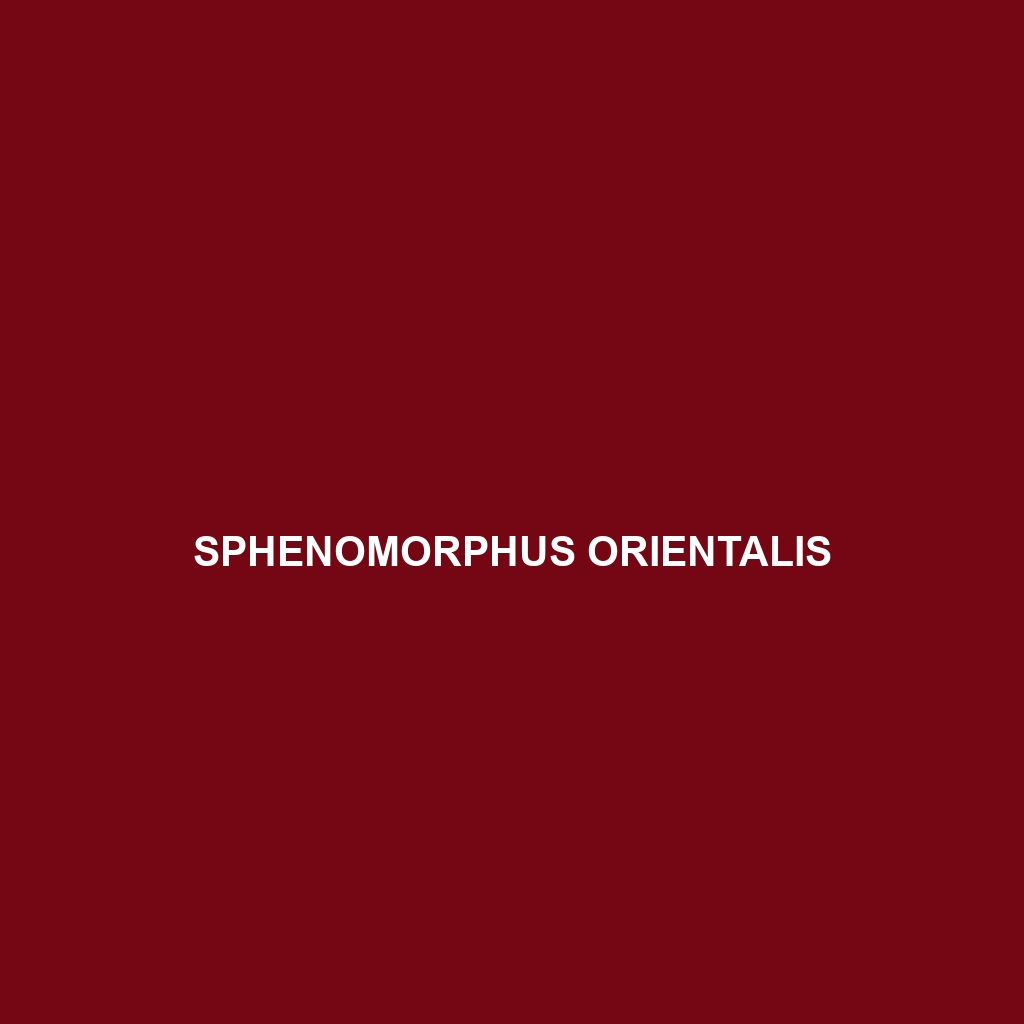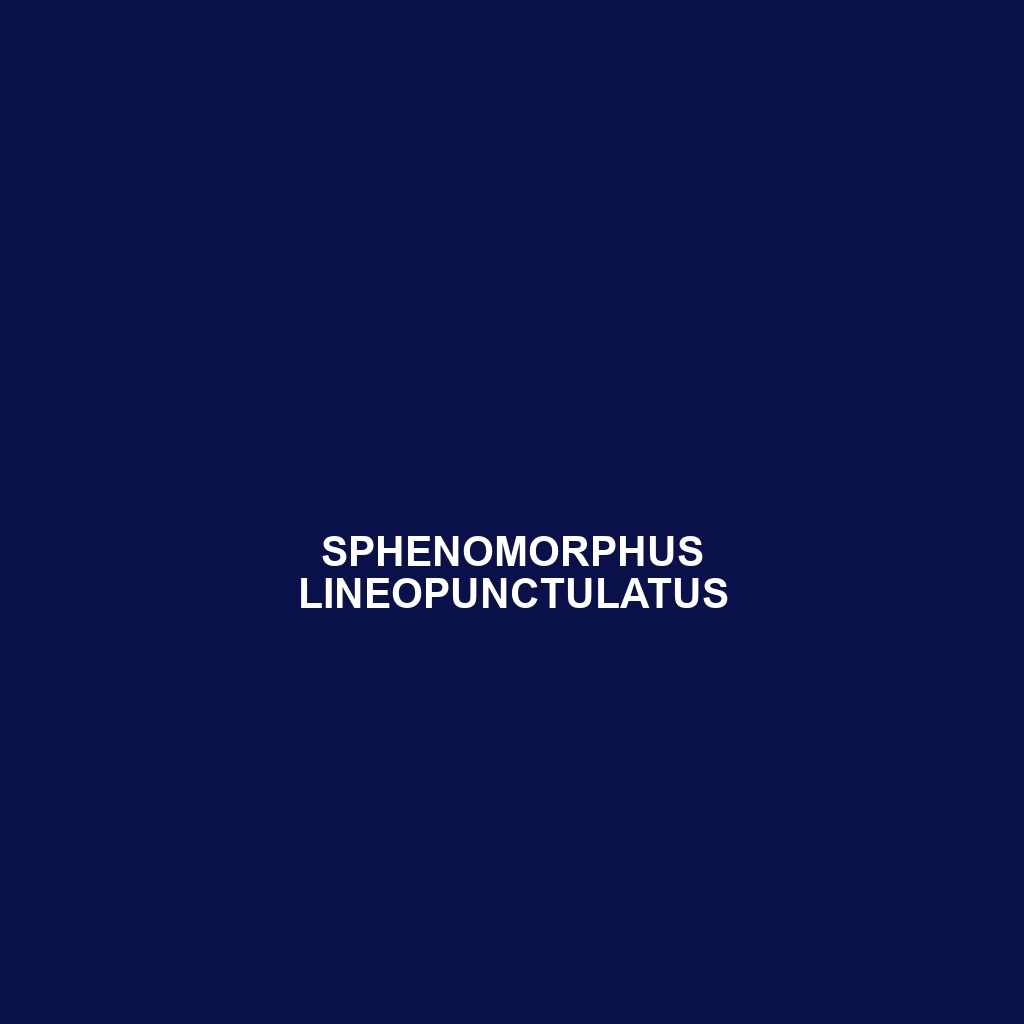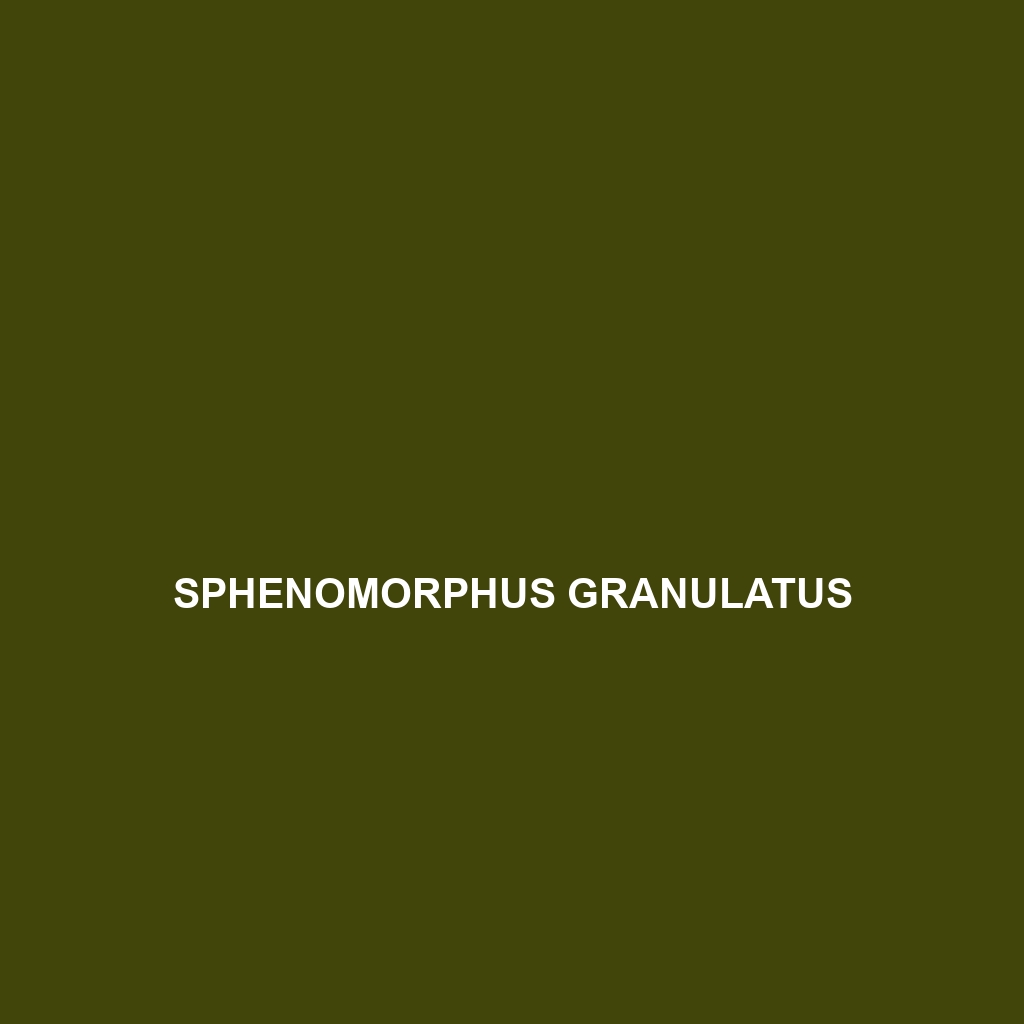<p>The <b>Sphenomorphus sanctus</b>, or sacred skink, is a vibrant green reptile native to the rainforests of Southeast Asia, measuring 10-15 cm in length. An agile insectivore, it plays a vital role in maintaining ecological balance, thriving in lush, humid environments while exhibiting unique behaviors like color adaptation and tail autotomy for protection.</p> </div>
Tag: insectivore species
Sphenomorphus orientalis
<strong>Sphenomorphus orientalis</strong> is a diurnal insectivorous lizard found in Southeast Asia's diverse habitats, including rainforests and savannas. Measuring 20-30 cm, it features smooth scales, a pointed snout, and plays a crucial role in controlling insect populations and supporting ecological balance.
Sphenomorphus nigrolabris
<b>Sphenomorphus nigrolabris</b>, commonly known as the Black-labored Skink, is a slender insectivorous lizard native to the rainforests of Southeast Asia, featuring a distinctive dark coloration with yellow labial scales. Adapted to humid environments, it plays a vital role in pest regulation within its ecosystem while exhibiting unique foraging behaviors and minimal parental care post-hatching.
Sphenomorphus murudensis
Murud Skink (Sphenomorphus murudensis): This medium-sized reptile, native to Southeast Asia's tropical rainforests, features a smooth, glossy body with striking coloration and camouflage to thrive in its humid habitat. Primarily diurnal and insectivorous, the Murud skink plays a vital role in regulating insect populations and contributes to the ecosystem's health and biodiversity.
Sphenomorphus lineopunctulatus
Discover the striking Sphenomorphus lineopunctulatus, or striped skink, a small and agile lizard native to the rainforests of Southeast Asia. With its unique blend of brown and green hues, fine horizontal stripes, and insectivorous diet, this species plays a vital role in pest control and supports biodiversity in its habitat.
Sphenomorphus latifasciatus
<b>Sphenomorphus latifasciatus</b>, commonly known as the broad-banded skink, is a vibrant insectivorous species native to Southeast Asia's tropical rainforests, recognized for its sleek body, striking coloration, and agile movements. Measuring 10 to 15 cm in length, this skink plays a crucial ecological role by regulating insect populations and serving as prey for various predators.
Sphenomorphus granulatus
Granulated Skink (Sphenomorphus granulatus): This slender, diurnal skink thrives in humid tropical and temperate forests of Southeast Asia, featuring a distinctive granular skin texture and a diet primarily of insects. With a notable ability to mimic dangerous snakes and regenerate its tail, the Granulated Skink plays a crucial role in controlling insect populations and maintaining ecological balance.
Sphenomorphus fragosus
Sphenomorphus fragosus, commonly known as the fringed skink, is a striking insectivore found in the rainforests of Southeast Asia, characterized by its smooth body, ranging from deep brown to vibrant green, and unique fringed scales. This agile species thrives in humid environments, playing a vital role in controlling insect populations while possessing remarkable camouflage and the ability to regenerate its tail.
Sphenomorphus darlingtoni
<p><b>Sphenomorphus darlingtoni</b>, known as Darlington's skink, is a vulnerable insectivorous species native to the humid rainforests of Southeast Asia, particularly in Indonesia and the Philippines. Measuring 15 to 25 cm, this slender skink exhibits earthy brown to deep green coloration, thriving in its ecosystem by controlling insect populations and contributing to food webs.</p>
Sphenomorphus consobrinus
Discover the <b>Sphenomorphus consobrinus</b>, commonly known as the eastern skink, a diurnal insectivore native to Southeast Asia's rainforests and savannas. This agile skink can reach lengths of 20 to 25 cm, showcasing distinctive gray or brown coloration, smooth scales, and a unique ability to regrow its tail, playing a vital role in maintaining ecosystem balance.









